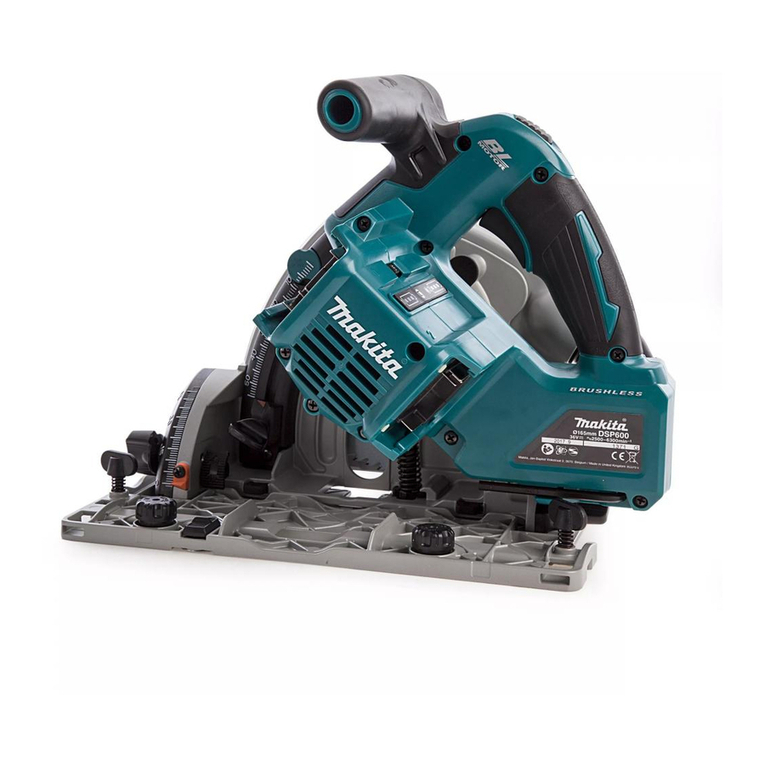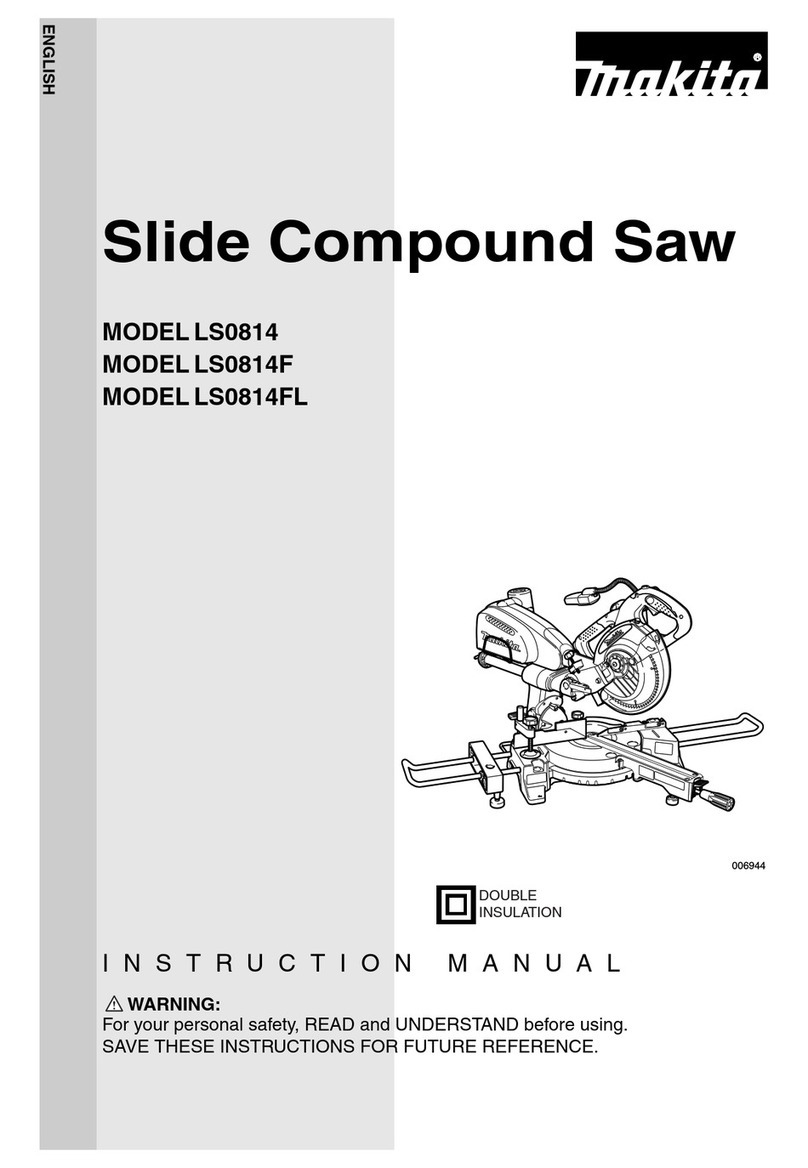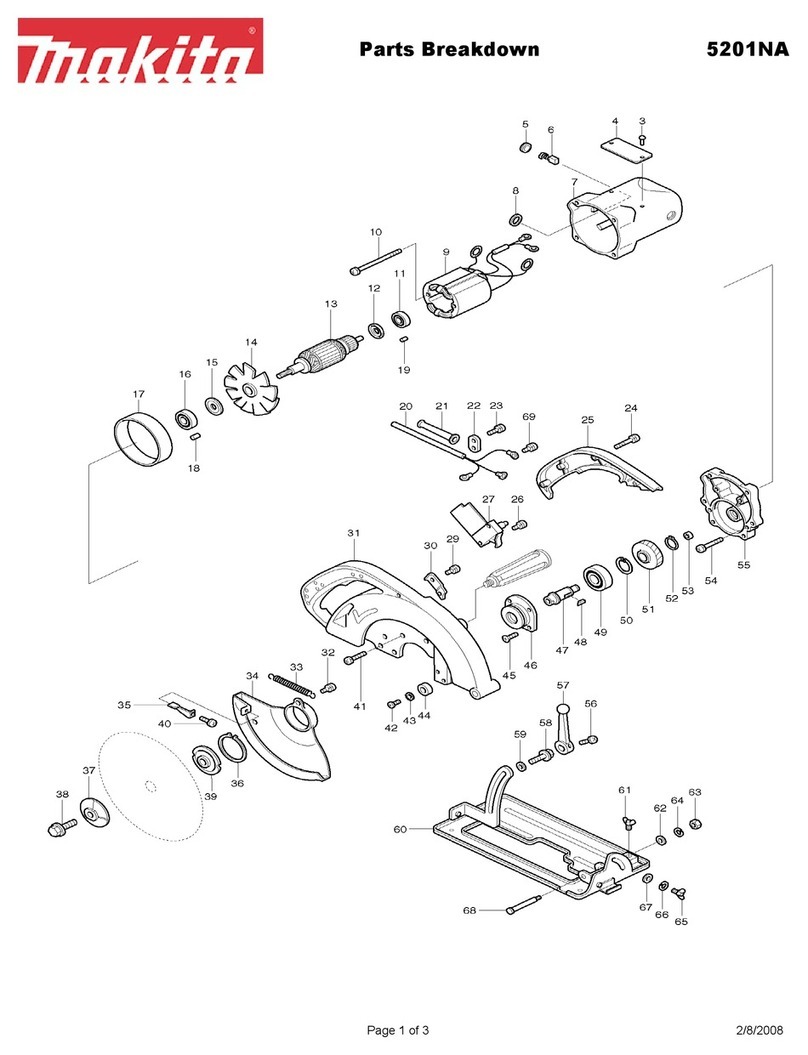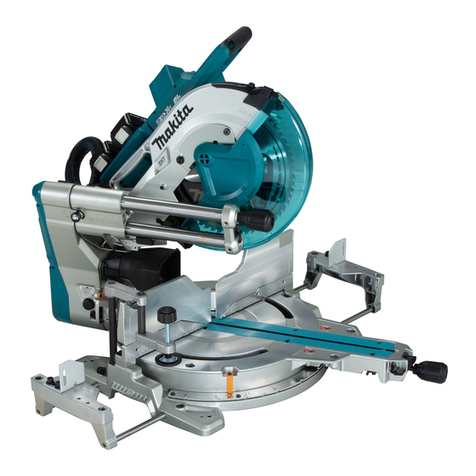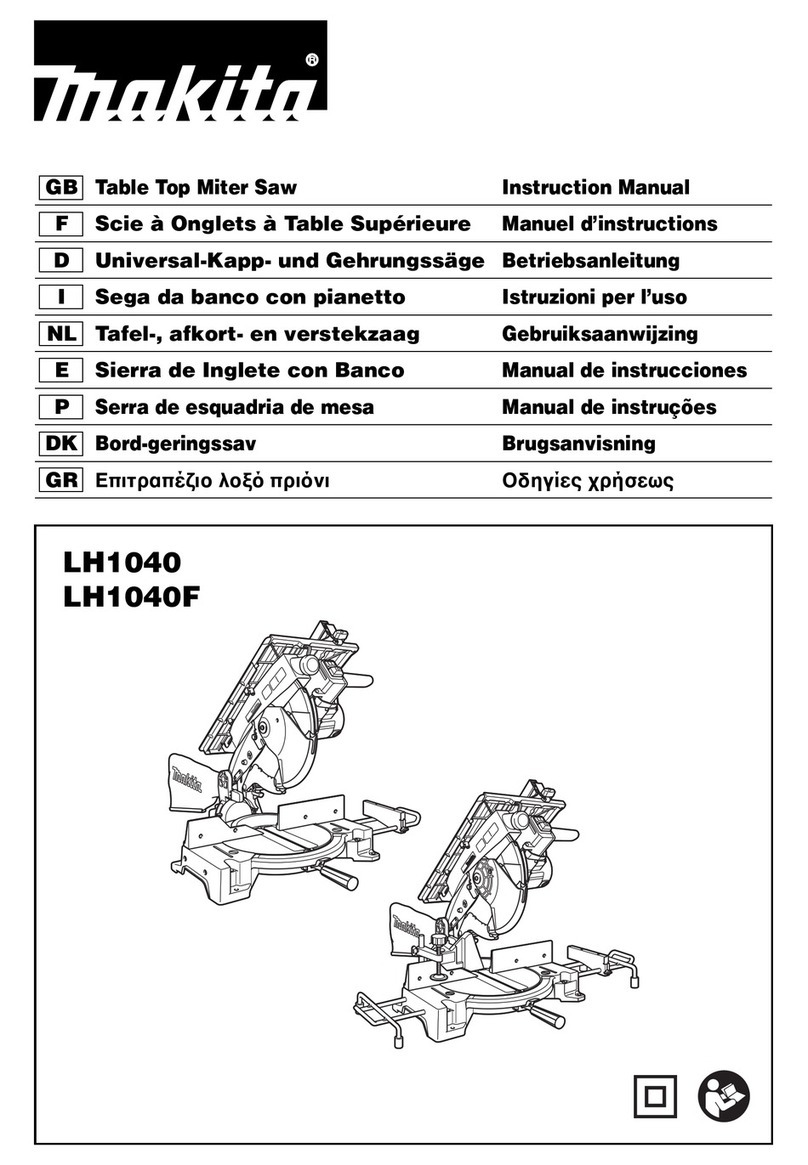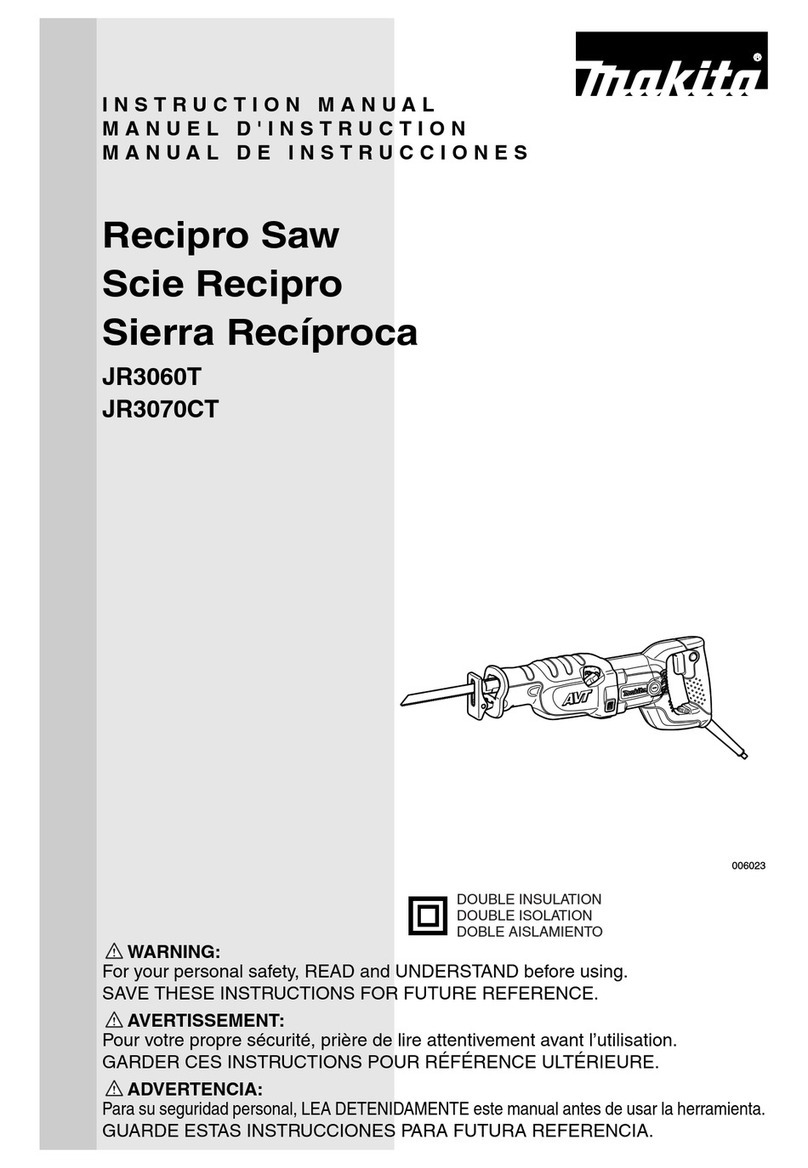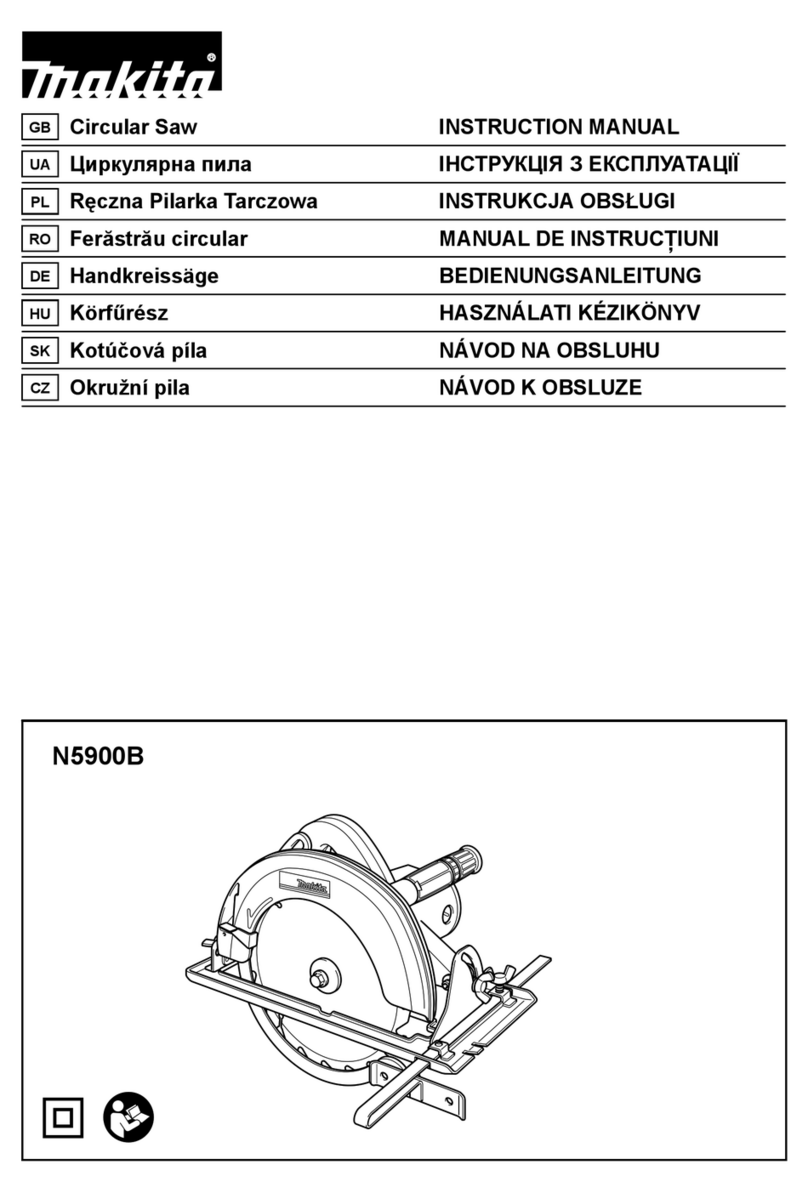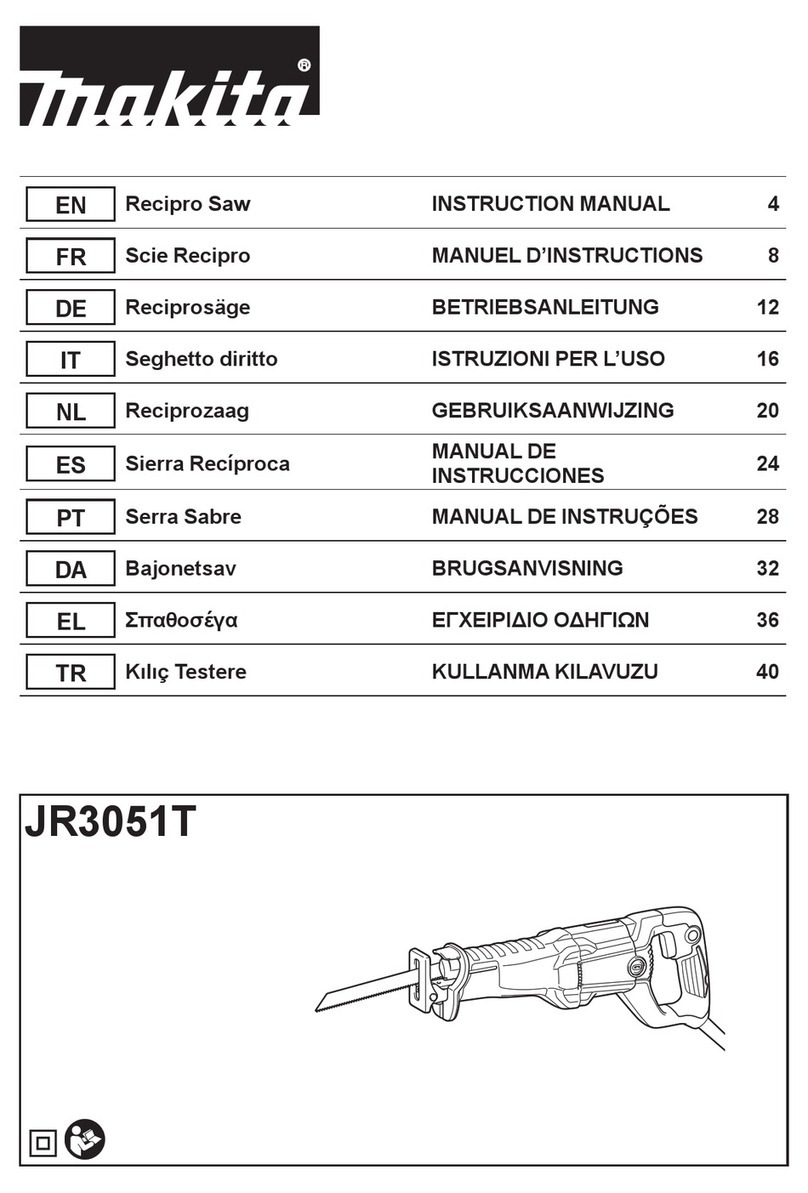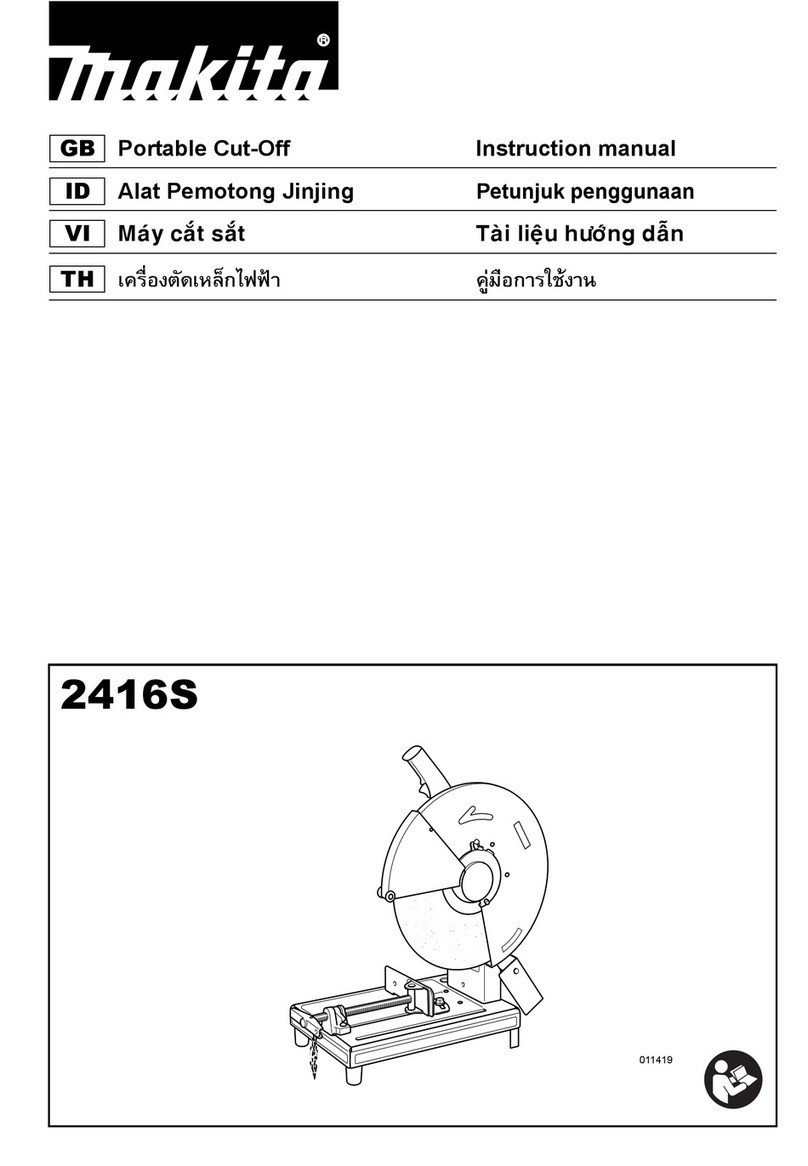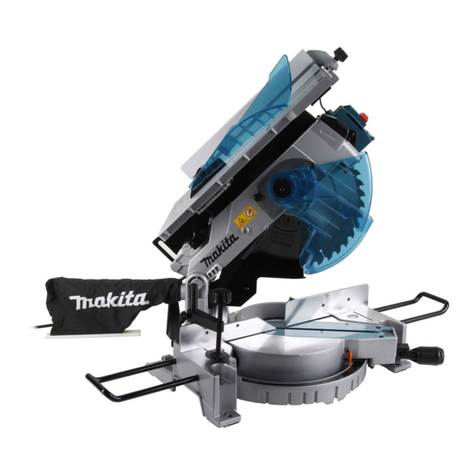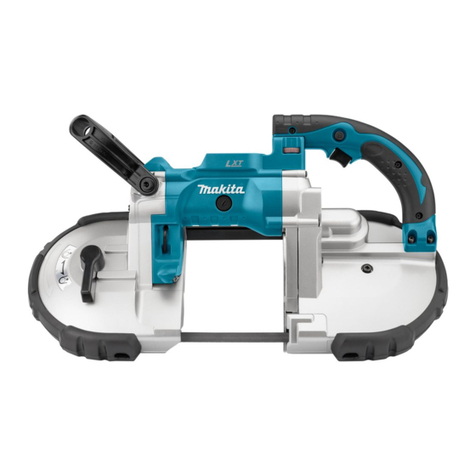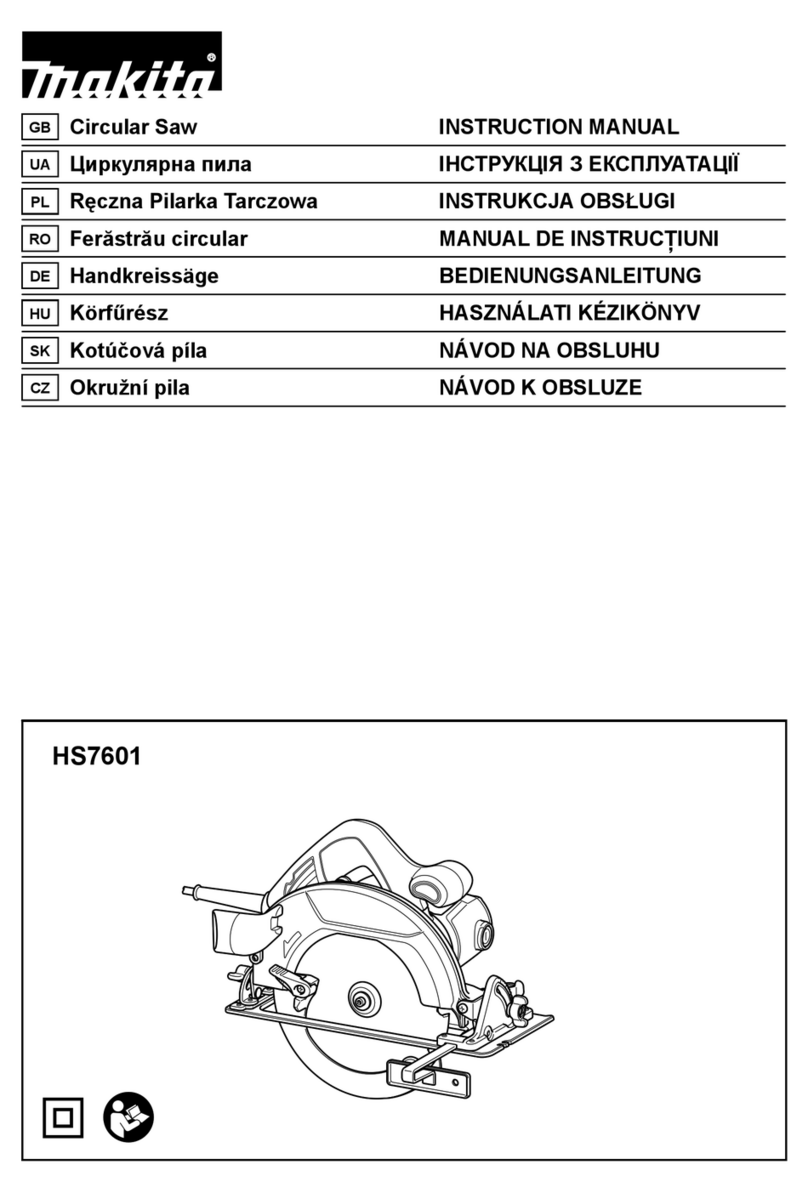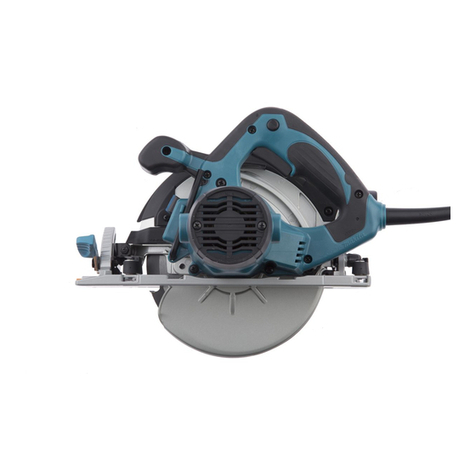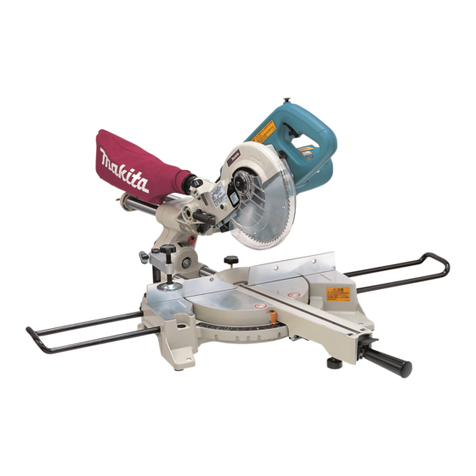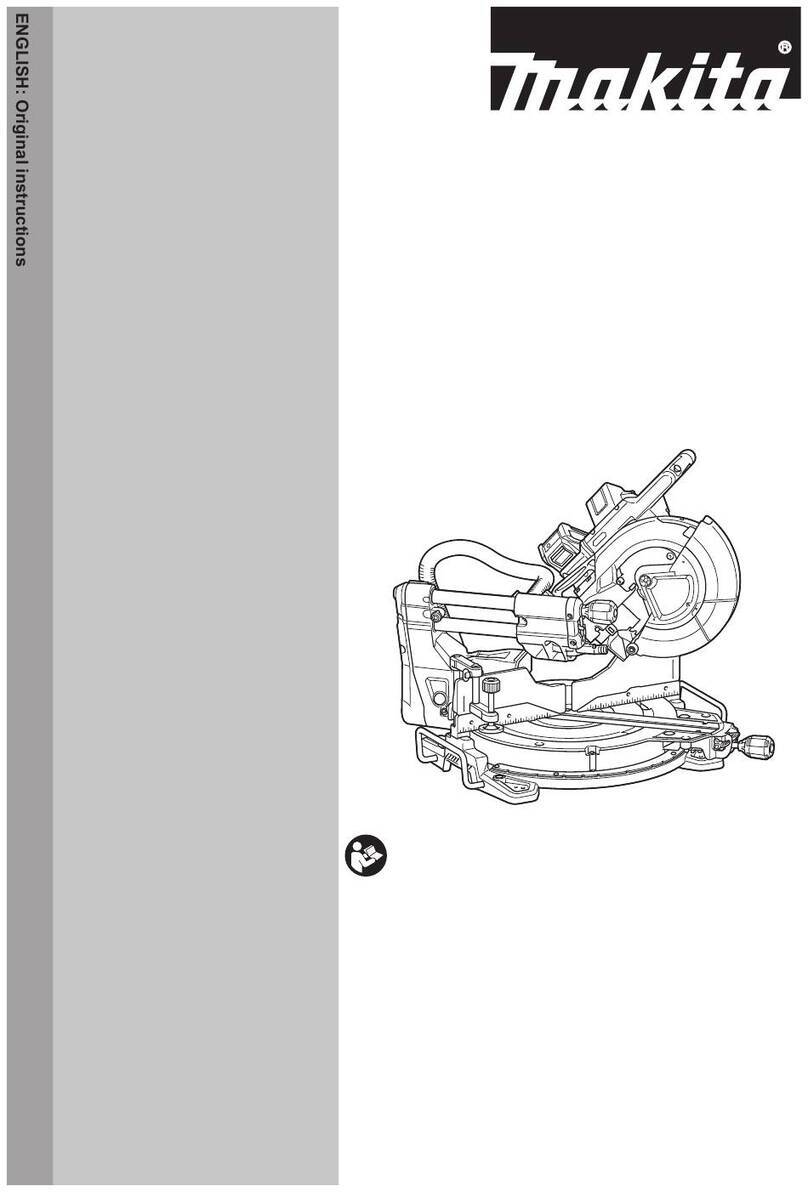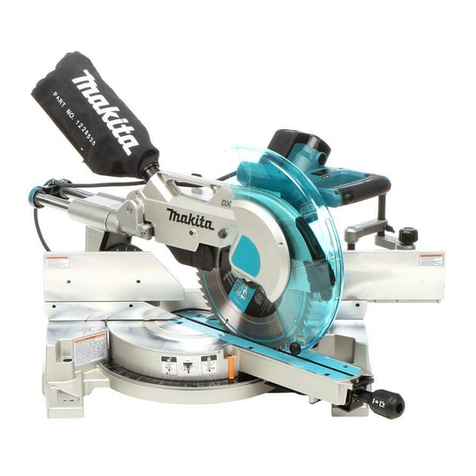4
21. Warning.
The use of any accessory or attachment, other
than those recommended in this instruction
manual or the catalog, may present a risk of
personal injury.
22. Have your tool repaired by a qualified person.
This electric tool is in accordance with the relevant
safety requirements. Repairs should only be
carried out by qualified persons using original
spare parts, otherwise this may result in
considerable danger to the user.
ENB095-1
ADDITIONAL SAFETY RULES
FOR TOOL
SAVE THESE INSTRUCTIONS.
1. Wear eye protection.
2. Do not use the tool in presence of flammable
liquids or gases.
3. NEVER use the tool with an abrasive cut-off
wheel installed.
4. Check the blade carefully for cracks or
damage before operation. Replace cracked or
damaged blade immediately.
5. Use only saw blades recommended by the
manufacturer and which conform to EN847-1,
and observe that the riving knife must not be
thicker than the width of the cut by the saw
blade and not thinner than the body of the
blade.
6. Always use accessories recommended in this
manual. Use of improper accessories such as
abrasive cut-off wheels may cause an injury.
7. Select the correct saw blade for the material to
be cut.
8. Do not use saw blades manufactured from
high speed steel.
9. To reduce the emitted noise, always be sure
that the blade is sharp and clean.
10. Use correctly sharpened saw blades. Observe
the maximum speed marked on the saw blade.
11. Clean the spindle, flanges (especially the
installing surface) and hex nut before
installing the blade. Poor installation may
cause vibration/wobbling or slippage of the
blade.
12. Use saw-blade guard and riving knife for every
operation for which it can be used, including
all through sawing operations. Always install
the blade guard following the instructions
out-lined in this manual. Through sawing
operations are those in which the blade cuts
completely through the workpiece as in
ripping or cross cutting. NEVER use the tool
with a faulty blade guard or secure the blade
guard with a rope, string, etc. Any irregular
operation of the blade guard should be
corrected immediately.
13. Immediately reattach the guard and riving
knife after completing an operation which
requires removal of the guard.
14. Do not cut metal objects such as nails and
screws. Inspect for and remove all nails,
screws and other foreign material from the
workpiece before operation.
15. Remove wrenches, cut-off pieces, etc. from
the table before the switch is turned on.
16. NEVER wear gloves during operation.
17. Keep hands out of the line of the saw blade.
18. NEVER stand or permit anyone else to stand in
line with the path of the saw blade.
19. Make sure the blade is not contacting the
riving knife or workpiece before the switch is
turned on.
20. Before using the tool on an actual workpiece,
let it run for a while. Watch for vibration or
wobbling that could indicate poor installation
or a poorly balanced blade.
21. The tool should not be used for slotting,
rabbetting or grooving.
22. Replace table insert when worn.
23. NEVER make any adjustments while tool is
running. Disconnect tool before making any
adjustments.
24. Use a push stick when required. Push sticks
MUST be used for ripping narrow workpieces
to keep your hands and fingers well away from
the blade.
25. Always store the push-stick when it is not in
use.
26. Pay particular attention to instructions for
reducing risk of KICKBACK. KICKBACK is a
sudden reaction to a pinched, bound or
misaligned saw blade. KICKBACK causes the
ejection of the workpiece from the tool back
towards the operator. KICKBACKS CAN LEAD
TO SERIOUS PERSONAL INJURY. Avoid
KICKBACKS by keeping the blade sharp, by
keeping the rip fence parallel to the blade, by
keeping the riving knife and blade guard in
place and operating properly, by not releasing
the workpiece until you have pushed it all the
way past the blade, and by not ripping a
workpiece that is twisted or warped or does
not have a straight edge to guide along the
fence.
